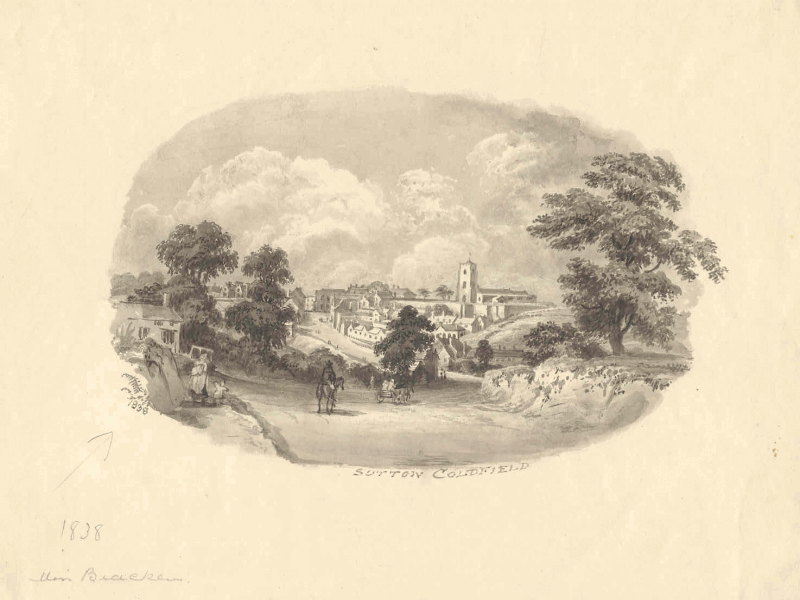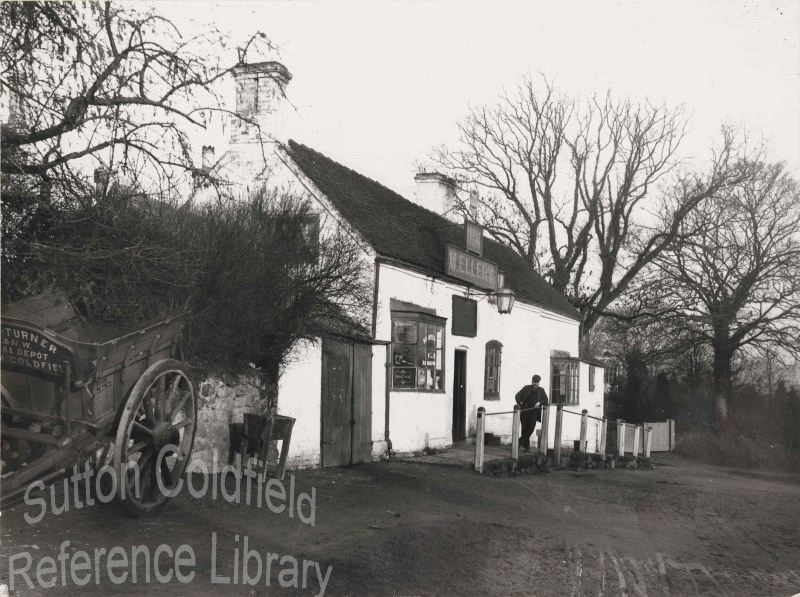Travellers coming to Sutton from the south used to have a fine view of the town from Birmingham Road near the Cup Inn, a view preserved for us in the drawing by Miss Bracken and in early photographs. Photographs show a single-storey building with the licensee’s name, M. Ellery, prominently displayed. It was claimed to be Sutton’s oldest pub, but this seems very doubtful.
In the eighteenth century it was known as The Golden Cup, from the testimony of a witness in a case of forgery. In 1794 John Jones, an engraver from Dudley, was in the Horse and Jockey pub when a man came in and tried to trick customers into buying his forged shillings and sixpences. Jones set off for Sutton High Street and reported to Charles Ball, who worked in Joseph Grange’s shoemakers shop there. They went to see Mr. Smith, the Constable of Sutton, at the Three Tuns, who told them to go and arrest the culprit. They hurried over to the Horse and Jockey by the footpath, (now Somerville Road and the Driffold), but the forger had gone when they arrived. A bystander told them the man had set off towards Sutton, so they went down to the Golden Cup, where they found the stranger still trying to pass off his false coins.
“The Cup public house and garden” is listed in 1824, licensee Thomas Brentnall. The owners of the pub were given as the Warden and Society, that is, the town council. Most of the property owned by the Warden and Society was former common land, so when a house or a pub was first built on the triangle of waste ground between Manor Hill and Birmingham Road, probably in the seventeenth century, the person living there would have to pay rent to the Warden and Society. The old pub was demolished in 1893, and a 1901 advertisement for the new pub gives M. Ellery as the proprietress, with something new to Sutton -“electrically lighted throughout”.

